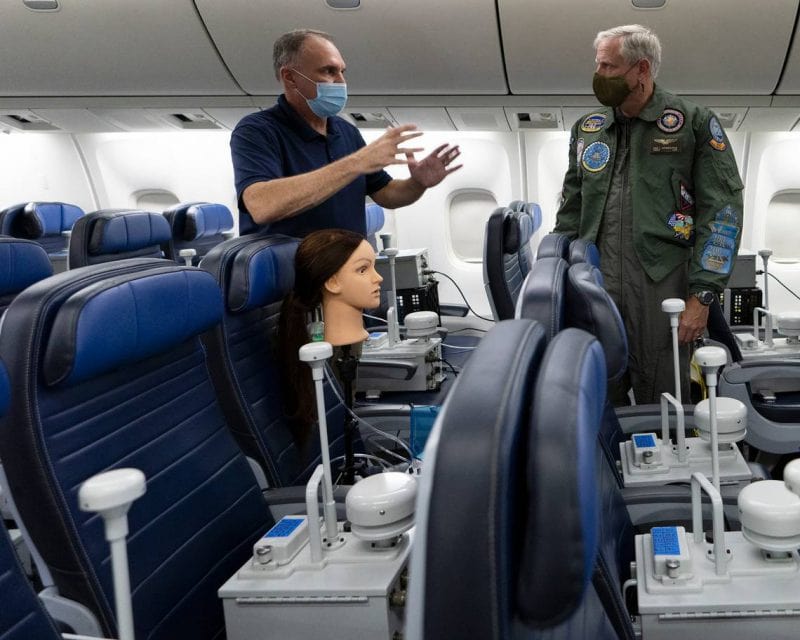DOD Finds COVID-19 Exposure on Aircraft ‘Extremely Unlikely’
US TRANSCOM study conducted aboard United 767 and 777 concluded “the overall exposure risk from aerosolized pathogens, like coronavirus, is very low”
October 18, 2020


The Department of Defense has just released the results of a comprehensive study of aircraft cabin airflow that show the risk of COVID-19 exposure is “extremely unlikely,” even on long-haul flights.
According to the research, when a passenger is seated and wearing a mask, 99.99 percent of particles released into the air from that person were removed from the cabin within six minutes. It takes about 90 minutes to clear the particles in the average home.
The Commercial Aircraft Cabin Aerosol Dispersion Test was conducted by the Department of Defense Transportation Command, or TRANSCOM, aboard United 767-300 and 777-200 aircraft, two airliners typically contracted to move Department of Defense personnel and their families.
At the beginning of the pandemic, the DOD had stopped or limited travel including by air. As travel restrictions eased, TRANSCOM conducted the tests to determine the risks associated as more personnel and their families took to the air.
The tests found that “the overall exposure risk from aerosolized pathogens, like coronavirus, is very low” on these types of aircraft. The “favorable results” stemmed from the combination of the aircraft’s air handling design, including high air-exchange rates, HEPA air filtration and recirculation system and the downward airflow ventilation.
“Within the scope of the test, the analysis showed overall low exposure risk on these aircraft from airborne pathogens like [coronavirus],” Vice Adm. Dee Mewbourne, deputy commander for TRANSCOM, said during a press briefing.
Mannequins were placed in various locations around the cabin and aerosols were released to simulate breathing and coughing with and without surgical masks. More than 300 aerosol releases were performed inflight, and during simulated inflight and on-the-ground testing.

The tests found both aircraft models removed particulate matter 15 times faster than a typical home ventilation system and 5 to 6 times faster “than the recommended design specifications for modern hospital operating or patient isolation rooms.”
In commenting on the report, the International Air Transport Association’s director general and CEO Alexandre de Juniac said, “The US TRANSCOM research provides further evidence that the risk of infection onboard an aircraft appears to be very low, and certainly lower than many other indoor environments.”
However, the study also makes clear that requiring passengers to wear masks throughout the journey is still a top safety requirement. “We found that on cough stimulations [with the mask], there was a very large reduction in aerosol that would come from the mannequin — greater than 95 percent in most cases,” said David Silcott, an author of the study from S3i, a biological research company. “It greatly showed the benefit of wearing a mask during a flight.”
The release of the TRANSCOM results comes days after the Flight Safety Foundation published its own analysis of the air travel industry’s response to the coronavirus pandemic. In it the Foundation concluded that industry efforts, in which masks play a large role, have succeeded in greatly reducing the possibility of transmission in airports and on aircraft.
The research found, in addition to mandating masks for passengers and crew, airlines and airports have implemented other changes to enhance health safety, including: Improved cleaning and disinfection procedures and technologies, new boarding and deplaning procedures, contactless check-in and international airport health accreditation programs.
United Airlines recently posted video on Twitter (@united) which shows the testing procedures. According to the video, following proper safety guidelines, including wearing a face mask throughout the flight, significantly diminishes the risk of COVID-19 transmission in a plane, reducing the chance of air particles infected with the SARS-CoV2- crossing a passenger’s breathing zone down to 0.003 percent.




